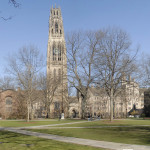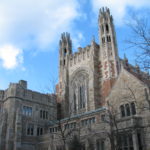At the time of its destruction, Windows on the World, located on the top floors of the North Tower, had the highest profits of any American restaurant, with possibly one of the most diverse restaurant staff. In 2006, survivors opened the restaurant Colors to honor their 73 fallen co-workers and support those who lost their jobs and means to support their family. Reflecting on the events from 14 years ago on this day, consider how this “World” tragedy is memorialized.
Rene Alegria, the CEO and founder of Mamiverse, an online space dedicated to connecting Latina mothers and families, recalls befriending many of the undocumented workers of Windows on the World. These workers would get up early in the morning to start preparing breakfast on the 106th and 107th floors of the tower, circumstances that made surviving the attacks nearly impossible.
Rafael Hernandez, a Mexican firefighter who migrated to the U.S. in 1999, volunteered at Ground Zero, subjecting his bodies to high levels of toxins and carcinogens. He worked at the site for 3 months and later led Frontiers of Hope, a group that supported workers dealing with the physical and psychological effects brought on by working the clean up of Lower Manhattan. Unfortunately, Hernandez died of health issues that were greatly exacerbated by his service. He was planning to return to his family in Mexico after getting his last paycheck.
The Asociación Tepeyac, owing its namesake to the site of visitation of Our Lady of Guadalupe to St. Juan Diego, worked not only to identify los desparecidos, the missing migrant workers, but also to aid the affected families and those who lost their jobs in a tragedy that did not “discriminate between legal and illegal, rich and poor.” Regrettably, the program was forced to end in 2008 because of lack of funding. Since then Mt. Sinai has taken over the program’s efforts and helped hundreds of Latino workers who, like Hernandez, suffered from hazardous chemical exposure.
Though there has been significant research and attention to the effect of the 9/11 terrorist attacks on Central American migration and the militarization of the U.S. – Mexico border, few are aware of the unique and intimate connections Latino migrants have with this tragedy. Just 5 days prior to 9/11 then–President George W. Bush was recorded saying that if they are willing to do a job no one else wants, then we should welcome them. Surely, walking among the dead at Ground Zero was a job few would volunteer to do, yet many migrant workers dug their hands into the remains and wreckage. Without even needing to be said, it was a day of such mourning for all of New York City, and a grief felt twice over by the Latino community.
When memorializing the attacks on the World Trade Center, people of color are omitted, as the master narrative, the Eurocentric perspective of colonialism, continues to weave together its whitewashed version of American history: few are aware that Mohawk ironworkers helped construct the original towers and that they later assisted in the clean up of Ground Zero and the construction of One World Trade Center. The media falls silent in recognizing these forgotten heroes. TIME magazine’s 64-page tribute on its 10th anniversary, for instance, pictured not one Black service worker who aided in the rescue efforts on September 11th, though about a dozen lost their lives in this tragedy. And of course, this country cannot hide the blatant anti-Muslim and anti-Middle Eastern sentiment that continues to reverberate across the nation.
Year after year on September 11th, New York City commemorates the tragedy with the slogan “Gone but not forgotten.” Yet some who died that day still do not have their names etched into the World Trade Center Memorial and were it not for their friends and family, they would have been forgotten.
by Leanne Motylenski



